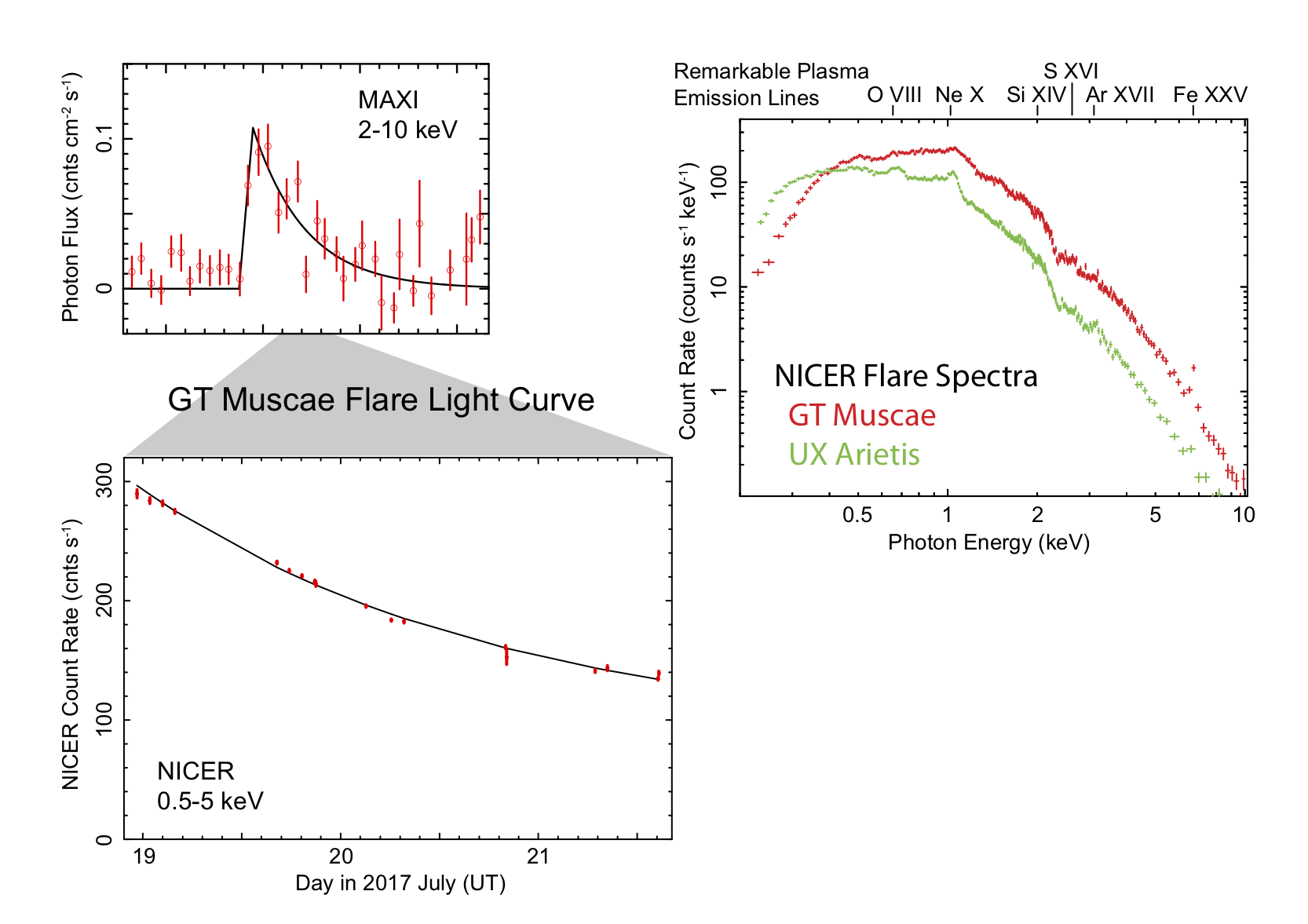NICER / ISS Science Nugget for December 8, 2017Observations of Stellar Flares Illuminate Magnetism in Young StarsGigantic X-ray flares or "superflares" of solar- and lower-mass stars occur very rarely and apparently randomly, and decay quickly on timescales of a few days to a week. The current orbiting X-ray observatories such as Chandra and XMM-Newton are not optimized to repoint quickly in response to such fast transient events. NICER, however, has a rapid maneuvering capability and flexible scheduling, enabling follow-ups of these X-ray flares within about a day or two, and also has a larger collecting areas in the X-ray band, enabling the study of these events on timescales as short as 1 minute or less. NICER has observed two giant X-ray flares from active binary systems, in response to their detections by the MAXI all-sky X-ray monitor onboard the ISS JEM-EF. These X-ray flares are believed to be driven by the reconnection of magnetic loops on one or both component stars. The present-day Sun also produces similar X-ray flares but with much smaller (by a factor of about 100,000) energies, which however can still disrupt the magnetosphere and upper atmosphere of the Earth. The young Sun once produced much more energetic X-ray flares, which likely affected and/or delayed the development of life on Earth. The study of such flares is thus important for the present day, e.g., operations in space, the terrestrial power grid, etc., as well as for understanding the conditions under which life can potentially originate. NICER began observing the X-ray flare in the active binary system GT Muscae in 2017 July about 1-2 days after its onset. It intermittently monitored the decay for the next 2.5 days, collecting roughly 380,000 photons in just 1,600 seconds of exposure. The light curve showed a smooth, gradual flux decline by a factor of two, followed by an apparent flattening (figure, left). The plasma stayed hot, at a temperature of about 40 million K (figure, right), suggesting an ongoing continuous heating during the decay phase. NICER also witnessed a flare on another active system, UX Arietis, in October 2017. NICER's X-ray spectrum shows clear neon and oxygen lines (figure, right), while the emission from highly ionized iron ions (Fe XXV) is not as prominent as it is in the flare of GT Muscae and other earlier flares. This result provides useful constraints on the stellar magnetic field structures and the elemental composition of the flaring plasmas. NICER
|



